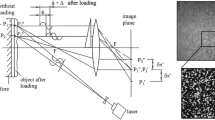Abstract
The quality and durability of adhesive bonds are affected by aging processes. Therefore, appropriate monitoring for early damage detection is essential for such bonds. For these reasons, we set out to develop an adhesive-based joining technology that makes early detection of potential defects in adhesive bonds possible. In this method, various dyes are added to the adhesive used, which indicate, if the specific load is exceeded. These dyes are micro-encapsulated through different methods, producing capsules of different sizes and wall thicknesses. When an adhesive bond is damaged or overloaded, the capsule would break and the dye would be released. The released colors can be detected optically or with suitable measurement systems. To demonstrate this technology, various experiments were carried out. Firstly, changes in adhesive properties were checked through thermal analysis and then pure substance specimens were produced and tested as means of comparison. Finally, the formulated adhesives were used to produce specimens for compressive shear tests, using glass and aluminium. The advantage of this technology by comparison to conventional nondestructive testing methods is the possibility to detect defects in adhesive bonds before the durability of the adhesive bond itself is affected.









Similar content being viewed by others
References
Luhn R, Sändig S, Geiß P, Wagner A (2008) Verbesserung der Langzeitbeständigkeit von Glasklebungen durch prozessintegrierte Oberflächenvorbehandlungsverfahren, 8. Kolloquium Gemeinsame Forschung in der Klebtechnik, 1–10
Hasenberg D, Dilger K, Böhm S (2005) Zerstörungsfreie Prüfung von Klebverbindungen mittels der ultraschallangeregten Thermografie, TU Braunschweig, 5. Kolloquiuum, Gemeinsame Forschung in der Klebtechnik, 1–30
Zäh MF, Mosandl T, Schlickenrieder K (2004) Zerstörungsfreie Prüfverfahren in der Klebtechnik—Stark im Verbund. In: Qualität und Zuverlässigkeit; 29. Jahrgang 2004; S. 58–59
Zäh MF, Kosteas D, Mosandl T, Michaloudaki M et al (2003) Zerstörungsfreie Prüfverfahren—Erzielbare Resultate und industrielle Umsetzbarkeit. In: Adhäsion; 2003; S. 18–23
Sliwka W (1975) Mikroverkapselung. In: Angewandte Chemie. S. 556–566; 87. Jahrgang 1975
Bauer H (1985) Einsatz von mikroverkapseltem Klebstoff in der Schraubenindustrie. In: Aktuelle und zukünftige Aufgaben beim Kleben und Dichten in der Praxis des Fahrzeugbaus; 1985; S. 163–178
Green BK (1957) Oil-containing microscopic capsules and method of making them. US-Patent 28 00 458 1953; 1957
White SR, Sottos NR, Geubelle PH, Moore JS et al (2001) Autonomic healing of polymer composites. Nature 409:794–797
Keller MW, Sottos NR (2005) Mechanical properties of microcapsules used in a self-healing polymer. Department of Theoretical and Applied Mechanics and Beckman Institute for Advanced Science and Technology, University of Illonois at Urbana-Champaign; S. 1–15
Yang J, Keller MW, Moore JS, White SR, Scottos NR (2008) Microencapsulation of isocyanates for self-healing poylmers. In: Macromolecules; American Chemical Society; S. 9650–9655
Shansky E (2006) Syntehsis and characterization of microcapsules for self-healing materials. Department of Chemistry, Indiana Univerisity; S. 514–546
Fraunhofer Mediendienst (2010) Kopfschutz mit Duftnote. Fraunhofer-Presse. Thema 2
Ghosh SK (2006) Functional coatings by polymer microencapsulation. WILEY-VCH Verlag, Weinheim
Hobein B, Lutz B (1989) Mikroverkapselung. Aulis Verlag Deubner, Köln
Marx T (1999) Thermo- bzw. photosensitive Mikrokapseln für den Einsatz in Tonern und Laserdruckern. Herbert Utz Verlag, München
Author information
Authors and Affiliations
Corresponding author
Additional information
Doc. IIW-2415, recommended for publication by Commission XVI “Polymer Joining and Adhesive Technology”
As a contributor to the IIW website you implicitly accept the terms of RD023: The author declares that the uploaded document(s) is(are) not covered by a copyright other than the author. If not, the document must not be uploaded on the website without the authorization of the copyright holder (RD024 or RD025).
Rights and permissions
About this article
Cite this article
Thiede, H., Koerte, F., Kahlmeyer, M. et al. Monitoring and damage detection of adhesive bonds with micro-encapsulated markers. Weld World 58, 253–259 (2014). https://doi.org/10.1007/s40194-013-0099-2
Received:
Accepted:
Published:
Issue Date:
DOI: https://doi.org/10.1007/s40194-013-0099-2




